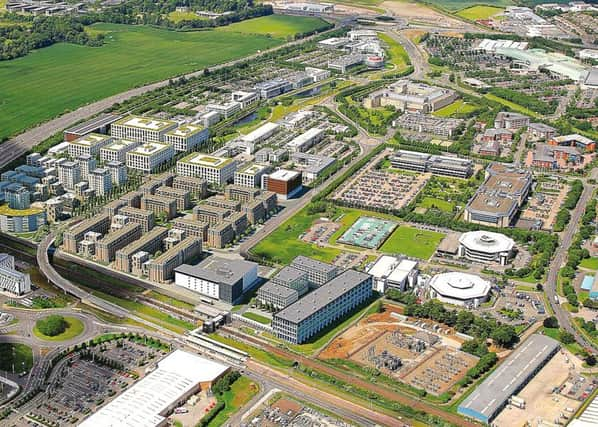Commercial property: Future-proofing for neutral outcomes


Last month, the Scottish Government set targets for Scotland to become carbon neutral by 2045.
Glasgow wants to reach the target “well before 2045”, while Edinburgh has set its sights on 2030, with a hard limit of 2037.
Advertisement
Hide AdAdvertisement
Hide AdHow we go about the design and construction of homes and offices will play a major part in how quickly we reach these targets.
In the UK, the operation of buildings accounts for about 30 per cent of total greenhouse gas emissions.
For new buildings, the embodied emissions from construction can be up to 50 per cent of the carbon impacts associated with a structure over its lifetime.
The good news is that emissions from buildings have fallen by 13 per cent since 2013, and they are about 20 per cent below 1990 levels.
However, there has been low uptake of energy-efficiency measures, and limited deployment of low-carbon heating options.
Achieving the 2045 target will require substantial improvements in energy efficiency and an increase in low-carbon heating.
The average length of time it takes for any new office building to go from concept to being fully operational is three to five years.
Consequently, policy has tended to outpace construction, often meaning that initial plans are outdated by the time the building is completed.
Advertisement
Hide AdAdvertisement
Hide AdIn response, many in the construction industry are taking action to ensure change begins now, employing methods which are strictly carbon-neutral to save playing catch-up later.
Steps include making sure local supply chains adopt low-carbon methods, and subscribe to the circular economy – a regenerative way of minimising waste and making the most of resources through long-lasting design, maintenance, and recycling.
The upfront costs of this can be greater for developers, but with demand for sustainable buildings growing among investors and occupiers, it is becoming clear that this is a necessary cost.
There is an argument that higher values can be justified – from an occupier’s perspective, energy and maintenance costs will be lower and, from an investor’s perspective, there will be less obsolescence.
In the Capital, developers involved in proposed plans at Edinburgh Park and Haymarket are already cognisant of these new targets and aim to deliver more sustainable buildings with lower levels of energy consumption.
These developments are being future-proofed to attract business which place environmental credentials at the heart of their strategies.
The faster our industry starts thinking more than five years ahead, the more we will be able to future-proof our buildings and meet the targets set in front of us.
Cameron Stott is a director at
JLL in Edinburgh